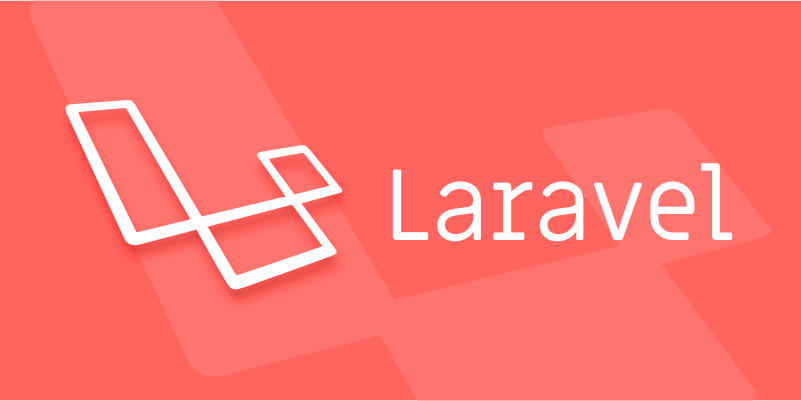Configuring and using different storage drivers in Laravel
Jul 05, 2025 am 12:55 AMLaravel provides multiple storage drivers like local, public, s3, ftp, and rackspace, each serving different use cases.1. Choose local or public for small apps where files are stored on the server or publicly accessible.2. Use s3 for scalable cloud storage by configuring AWS credentials and bucket details in filesystems.php and .env.3. Configure ftp by providing host, username, password, and root path.4. Interact with files via the Storage facade using methods like put(), get(), and store().5. Set visibility to public when sharing files externally.6. Run php artisan storage:link to make public disk files web-accessible via symlink. Proper configuration and visibility settings are essential to avoid issues across environments.

When working with file storage in Laravel, the framework gives you a flexible way to manage files across different storage drivers like local, S3, FTP, and more. Choosing and configuring the right driver matters when handling uploads, backups, or serving media from cloud providers.

Understanding Available Storage Drivers
Laravel supports several built-in storage drivers out of the box:

-
local: Files are stored on your server’s local filesystem. -
public: Similar to local, but files are publicly accessible (usually stored instorage/app/publicand linked topublic/storage). -
s3: Uses Amazon S3 for storing files. -
ftp/sftp: For uploading files via FTP(S) or SFTP. -
rackspace: Less common now, but still supported for legacy setups.
Each driver serves a specific purpose. If you're building a small app or just prototyping, local or public might be enough. But if you're deploying an app that needs scalable and globally accessible media, using s3 makes more sense.
Configuring a Driver in filesystems.php
All configuration happens in the config/filesystems.php file. Here's how you set up each driver:

For local or public:
'disks' => [
'local' => [
'driver' => 'local',
'root' => storage_path('app'),
],
'public' => [
'driver' => 'local',
'root' => storage_path('app/public'),
'url' => env('APP_URL').'/storage',
'visibility' => 'public',
],
]For Amazon S3, you'll need AWS credentials and a bucket name:
's3' => [
'driver' => 's3',
'key' => env('AWS_ACCESS_KEY_ID'),
'secret' => env('AWS_SECRET_ACCESS_KEY'),
'region' => env('AWS_DEFAULT_REGION'),
'bucket' => env('AWS_BUCKET'),
'url' => env('AWS_URL'),
],Make sure to fill these values in your .env file:
AWS_ACCESS_KEY_ID=your-key AWS_SECRET_ACCESS_KEY=your-secret AWS_DEFAULT_REGION=us-east-1 AWS_BUCKET=your-bucket-name AWS_URL=https://your-bucket.s3.amazonaws.com
You can also configure ftp by providing host, username, password, and root path.
Using the Storage Facade in Your Code
Once configured, interacting with files is straightforward using the Storage facade.
To save a file:
use Illuminate\Support\Facades\Storage;
Storage::disk('s3')->put('avatars/'.$user->id, $fileContents);To get a file:
$contents = Storage::disk('s3')->get('avatars/1');If you're handling file uploads from forms, especially images or documents:
$request->file('avatar')->store('avatars', 's3');This stores the uploaded file under the avatars directory using the s3 disk.
One thing to note: visibility settings affect how files are accessed. Use 'visibility' => 'public' when files need to be shared externally, otherwise stick with default private access unless needed.
Also, when using the public disk, don’t forget to run:
php artisan storage:link
This creates a symlink from public/storage to storage/app/public, allowing public access to those files via the web.
That’s basically it — configure the right driver, use the right disk in your code, and make sure permissions and visibility are set properly. It’s not complicated, but easy to misconfigure, especially when moving between environments or switching drivers.
The above is the detailed content of Configuring and using different storage drivers in Laravel. For more information, please follow other related articles on the PHP Chinese website!

Hot AI Tools

Undress AI Tool
Undress images for free

Undresser.AI Undress
AI-powered app for creating realistic nude photos

AI Clothes Remover
Online AI tool for removing clothes from photos.

Clothoff.io
AI clothes remover

Video Face Swap
Swap faces in any video effortlessly with our completely free AI face swap tool!

Hot Article

Hot Tools

Notepad++7.3.1
Easy-to-use and free code editor

SublimeText3 Chinese version
Chinese version, very easy to use

Zend Studio 13.0.1
Powerful PHP integrated development environment

Dreamweaver CS6
Visual web development tools

SublimeText3 Mac version
God-level code editing software (SublimeText3)

Hot Topics
 How to create Laravel package (Package) development?
May 29, 2025 pm 09:12 PM
How to create Laravel package (Package) development?
May 29, 2025 pm 09:12 PM
The steps to create a package in Laravel include: 1) Understanding the advantages of packages, such as modularity and reuse; 2) following Laravel naming and structural specifications; 3) creating a service provider using artisan command; 4) publishing configuration files correctly; 5) managing version control and publishing to Packagist; 6) performing rigorous testing; 7) writing detailed documentation; 8) ensuring compatibility with different Laravel versions.
 What is Middleware in Laravel? How to use it?
May 29, 2025 pm 09:27 PM
What is Middleware in Laravel? How to use it?
May 29, 2025 pm 09:27 PM
Middleware is a filtering mechanism in Laravel that is used to intercept and process HTTP requests. Use steps: 1. Create middleware: Use the command "phpartisanmake:middlewareCheckRole". 2. Define processing logic: Write specific logic in the generated file. 3. Register middleware: Add middleware in Kernel.php. 4. Use middleware: Apply middleware in routing definition.
 Laravel Page Cache Policy
May 29, 2025 pm 09:15 PM
Laravel Page Cache Policy
May 29, 2025 pm 09:15 PM
Laravel's page caching strategy can significantly improve website performance. 1) Use cache helper functions to implement page caching, such as the Cache::remember method. 2) Select the appropriate cache backend, such as Redis. 3) Pay attention to data consistency issues, and you can use fine-grained caches or event listeners to clear the cache. 4) Further optimization is combined with routing cache, view cache and cache tags. By rationally applying these strategies, website performance can be effectively improved.
 Laravel MVC Architecture: what can go wrong?
Jun 05, 2025 am 12:05 AM
Laravel MVC Architecture: what can go wrong?
Jun 05, 2025 am 12:05 AM
Laravel'sMVCarchitecturecanfaceseveralissues:1)Fatcontrollerscanbeavoidedbydelegatinglogictoservices.2)Overloadedmodelsshouldfocusondataaccess.3)Viewsshouldremainsimple,avoidingPHPlogic.4)PerformanceissueslikeN 1queriescanbemitigatedwitheagerloading.
 How to populate test data using Seeder in Laravel?
May 29, 2025 pm 09:21 PM
How to populate test data using Seeder in Laravel?
May 29, 2025 pm 09:21 PM
Using Seeder to fill test data in Laravel is a very practical trick in the development process. Below I will explain in detail how to achieve this, and share some problems and solutions I encountered in actual projects. In Laravel, Seeder is a tool used to populate databases. It can help us quickly generate test data, which facilitates development and testing. Using Seeder not only saves time, but also ensures data consistency, which is especially important for team collaboration and automated testing. I remember that in a project, we needed to generate a large amount of product and user data for an e-commerce platform, and Seeder came in handy at that time. Let's see how to use it. First, make sure your Lara is
 What is Laravel Migrations? How to use it?
May 29, 2025 pm 09:24 PM
What is Laravel Migrations? How to use it?
May 29, 2025 pm 09:24 PM
Laravel's migration is a database version control tool that allows developers to programmatically define and manage database structure changes. 1. Create a migration file using the Artisan command. 2. The migration file contains up and down methods, which defines the creation/modification and rollback of database tables respectively. 3. Use the phpartisanmigrate command to execute the migration, and use phpartisanmigrate:rollback to rollback.
 Laravel: Simple MVC project for beginners
Jun 08, 2025 am 12:07 AM
Laravel: Simple MVC project for beginners
Jun 08, 2025 am 12:07 AM
Laravel is suitable for beginners to create MVC projects. 1) Install Laravel: Use composercreate-project--prefer-distlaravel/laravelyour-project-name command. 2) Create models, controllers and views: Define Post models, write PostController processing logic, create index and create views to display and add posts. 3) Set up routing: Configure/posts-related routes in routes/web.php. With these steps, you can build a simple blog application and master the basics of Laravel and MVC.
 What are routes in Laravel, and how are they defined?
Jun 12, 2025 pm 08:21 PM
What are routes in Laravel, and how are they defined?
Jun 12, 2025 pm 08:21 PM
In Laravel, routing is the entry point of the application that defines the response logic when a client requests a specific URI. The route maps the URL to the corresponding processing code, which usually contains HTTP methods, URIs, and actions (closures or controller methods). 1. Basic structure of route definition: bind requests using Route::verb('/uri',action); 2. Supports multiple HTTP verbs such as GET, POST, PUT, etc.; 3. Dynamic parameters can be defined through {param} and data can be passed; 4. Routes can be named to generate URLs or redirects; 5. Use grouping functions to uniformly add prefixes, middleware and other sharing settings; 6. Routing files are divided into web.php, ap according to their purpose






